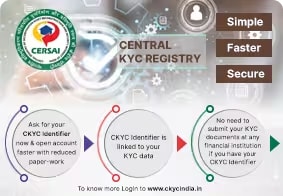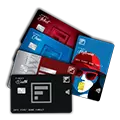Enjoy Zero Charges on All Commonly Used Savings Account Services
- About Us
- MD & CEO letter about the bank
- MD & CEO
- Our History
- Letter to Shareholders on the 1st Annual Report after Merger
- Letter to Shareholders on the 2nd Annual Report after Merger
- Letter to Shareholders on the 3rd Annual Report after Merger
- Letter to Shareholders on the 4th Annual Report after Merger
- Board of Directors
- Awards & Accolades
- News Room
- Investors
- Careers
- ESG
-
Customer care hotlineCall 1800 10 888
-
As per amendment in the Income Tax Rules, PAN or Aadhaar are to be mandatorily quoted for cash deposit or withdrawal aggregating to Rupees twenty lakhs or more in a FY. Please update your PAN or Aadhaar. Kindly reach out to the Bank’s contact center on 1800 10 888 or visit the nearest IDFC FIRST Bank branch for further queries.
-
-
FinFIRST Blogs
Credit cards are a lifesaver for people who exhaust their bank savings account balance before the next month’s salary arrives. Also, if you make a big-ticket purchase and are unable to repay the entire monthly bill in one go, you have convenient options:
· You can pay a lower Annual Percentage Rate (APR) than the usual market rate of 42% p.a. if your bank has extended the lower APR facility to you, or
· If your bank doesn’t offer a lower APR than the usual 42% p.a., you can do a balance transfer to another bank credit card that provides you with the lower APR facility, or
· You can opt for EMI conversion for a fixed tenure at a fixed interest rate much lower than the usual APR of 42% p.a.
Credit cards, when used in an optimum manner, provide various benefits. These include instant discounts, reward points, interest-free credit, dynamic APR, EMI conversion, balance transfer, etc. This article will focus on some credit card features related to ease of repayment. These include dynamic APR, EMI conversion facility, and balance transfer facility.
High Interest Outgo Leaves Little to No Amount for Investments
Usually, most banks charge an APR of 42% p.a. (3.5% per month) for the credit card outstanding balance carried forward. It is okay if you spent a high amount due to some medical or other emergency and are confident of repaying the outstanding in a month or two. If it will take longer than that for repayment, you need to look for options for easing the repayment.
If you continue paying the 42% p.a. APR for a longer period, it will soon start impacting your cash flows. The interest burden will start eating into your short- and long-term investments. It may leave less money for investing towards your financial goals, such as building a fund for retirement or a child's higher education. Due to the high interest repayment burden associated with credit cards, you cannot afford to sacrifice or postpone your financial goals.
What are your options to save money? Here are 3 credit card tips and tricks you can use to make the best of your credit card and save money in the process.
1) Choose Credit Cards with a Lower APR
While most banks have an APR of 42%, some offer a dynamic APR. So, the bank may offer the following:
· A lower than 42% APR right from day one, or
· Start with a 42% APR and then reduce it progressively over time based on your performance and the bank’s internal assessment.
For example, IDFC FIRST Bank offers a dynamic APR of 9%-42% p.a. As mentioned earlier, it may assign you a lower than 42% APR right from day one. The other option is to start with a 42% APR and progressive performance-based reduction of up to 9%.
A lower APR helps you in two ways:
· You pay a lesser interest amount. For example, a Rs 20,000 repayment at 9% APR will have a lower interest amount outgo than at 42% APR.
· Your repayment will get over faster. For example, a Rs 20,000 repayment at 9% APR will get over in a faster tenure than at 42% APR.
The lower interest amount outgo due to a lower APR results in more money in your pocket. You can use the saved amount for investment towards financial goals. The more money you invest, the faster you accomplish your financial goals.
2) Convert Outstanding into EMI
If your bank doesn’t offer you a dynamic APR, the other option is to repay in EMIs. You can convert your entire outstanding or big-ticket transactions into affordable EMIs. Banks usually allow EMI repayment tenures ranging from 3 to 36 months.
For example, IDFC FIRST Bank offers the EMI repayment option. You can convert your entire outstanding or specific transactions above Rs 2500 into EMIs. You can opt for the EMI option either at the time of doing the purchase transaction (online or offline) or later. From time to time, you also get offers with instant discounts and cashback on EMI transactions.
3) Do a Balance Transfer (BT)
The balance transfer facility allows you to transfer the outstanding balance from one bank’s credit card to another bank’s credit card. For example, assume you hold credit cards from both SBI and IDFC FIRST Bank. You have an outstanding balance of Rs 25,000 on your SBI credit card. You can do a balance transfer from the SBI card to your IDFC FIRST Bank Credit Card.
In this process, IDFC FIRST Bank will pay your outstanding amount of Rs 25,000 to SBI Cards. The Rs 25,000 amount will then reflect as outstanding on your IDFC FIRST Bank Credit Card. Now you will have to pay the Rs 25,000 amount to IDFC FIRST Bank instead of SBI.
From time to time, the IDFC FIRST Bank Credit Card comes up with cashback offers for balance transfer transactions. So, when you do a balance transfer from the other bank’s credit card to your IDFC FIRST Bank Credit Card, you will get a cashback as per the offer terms and conditions.
Once the balance transfer to IDFC FIRST Bank is completed, you can pay the outstanding amount in its entirety or in parts. As explained in the earlier section, you will benefit from the lower APR on IDFC FIRST Bank Credit Cards. You also can avail of the EMI facility. So, the balance transfer facility is one of the best uses of a credit card.
Other Credit Card Features and Benefits
The above section focused on the 3 best ways of how to use a credit card. Here are some more features and benefits of credit cards that will be useful to you.
1) Reward Points
Most credit cards give you reward points on usage. The reward points may be based on every Rs 50-200 spent. Some credit cards give you base reward points (1x) for every Rs 50-200 spent. Other cards may give you accelerated reward points. For example, most IDFC FIRST Bank Credit Cards give you 3x reward points on offline spending and 6x on online spending. These reward points never expire.
2) Joining and Annual Fees
Most credit cards from most banks have a joining and an annual renewal fee. Some credit cards either waive or reverse the annual fee if a specified amount is spent. However, with IDFC FIRST Bank, all . So, there is neither a joining fee nor an annual fee.
3) ATM Cash Withdrawal
Credit cards allow you to withdraw cash from your credit limit through an ATM. There is a fee per withdrawal, and interest is applicable from the day of withdrawal. However, with IDFC FIRST Bank Credit Cards, there is no interest charged till the next due date. Also, the per withdrawal fee is low at Rs 199.
Credit Cards Provide You with Benefits at the Time of Purchase and Repayment
Many people talk about how credit cards provide benefits at the time of purchase. These include instant discounts, cashback, reward points, EMI facility, etc. But, many people don't highlight the benefits that credit cards provide at the time of repayment.
In this article, you learned about some credit card tricks you can use for easy repayment. IDFC FIRST Bank Credit Cards can provide you with an APR as low as 9% p.a. to reduce your interest burden. You can also opt for flexible EMI repayments. Lastly, you can do a balance transfer of your other bank credit card outstanding to your IDFC FIRST Bank Credit Card. You may benefit from any ongoing cashback offer on balance transfer. Post the balance transfer, you may avail of a lower APR or EMI facility benefits for repayment.
Disclaimer
The contents of this article/infographic/picture/video are meant solely for information purposes. The contents are generic in nature and for informational purposes only. It is not a substitute for specific advice in your own circumstances. The information is subject to updation, completion, revision, verification and amendment and the same may change materially. The information is not intended for distribution or use by any person in any jurisdiction where such distribution or use would be contrary to law or regulation or would subject IDFC FIRST Bank or its affiliates to any licensing or registration requirements. IDFC FIRST Bank shall not be responsible for any direct/indirect loss or liability incurred by the reader for taking any financial decisions based on the contents and information mentioned. Please consult your financial advisor before making any financial decision.
The features, benefits and offers mentioned in the article are applicable as on the day of publication of this blog and is subject to change without notice. The contents herein are also subject to other product specific terms and conditions and any third party terms and conditions, as applicable. Please refer our website www.idfcfirstbank.com for latest updates.


 What's special about us
What's special about us




















